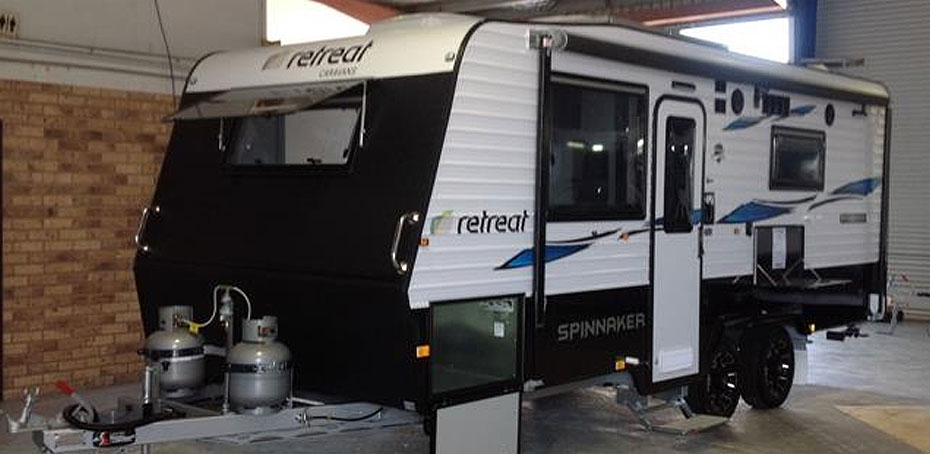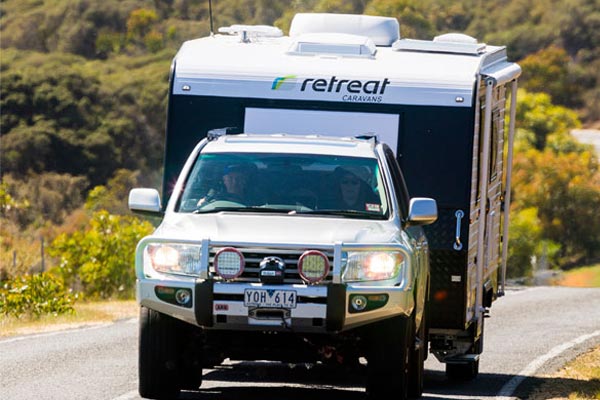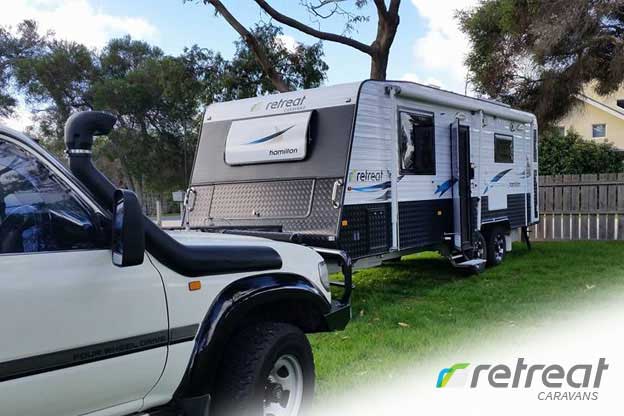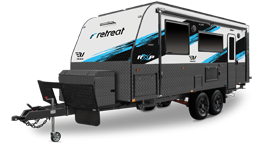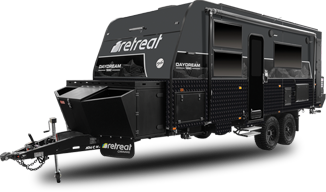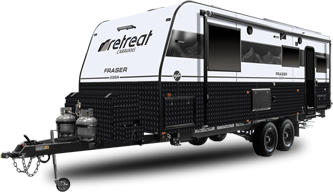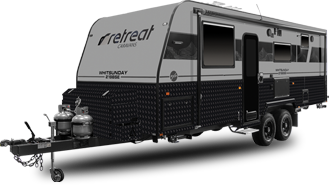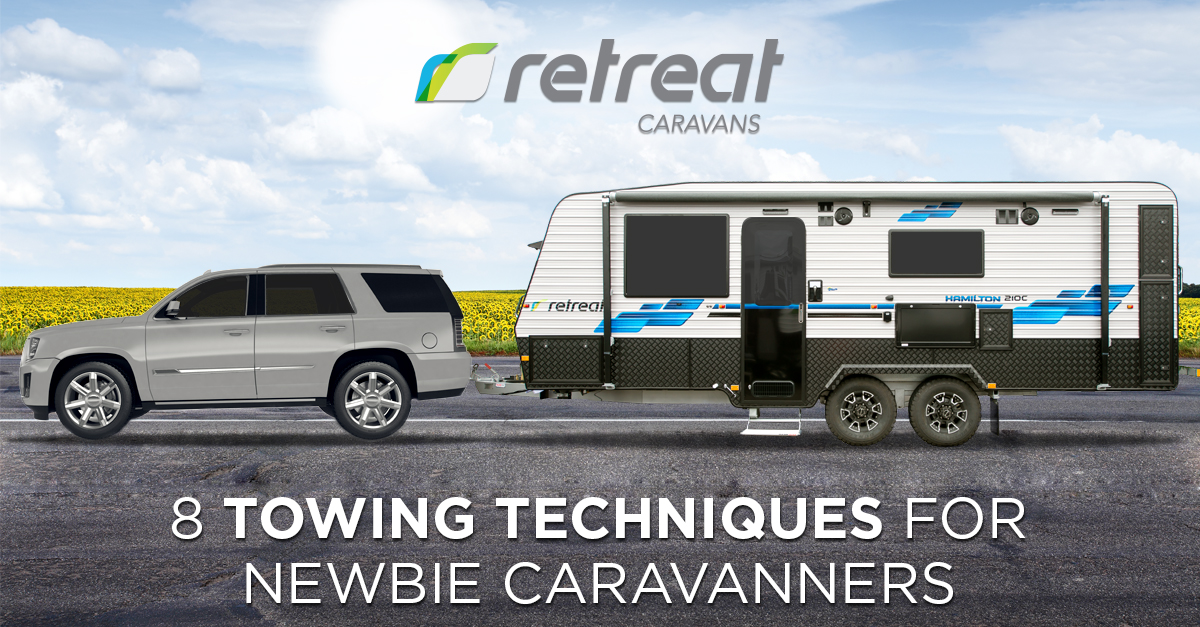
8 Towing Techniques for Newbie Caravanners
Towing a caravan for the first time can feel like going back to driving school. All the things you’ve learned about driving a truck or wagon suddenly feel insufficient.
Check our latest caravans for sale in 2017.
Parking spaces become smaller, applying the emergency brake is not an option and you can’t overtake other vehicles as easily as before. Additionally, considering what to bring along becomes more important.
Fortunately, you just only need practice so you’ll get used to handling a vehicle and a rig. To get you started, it’s best that you master these actions.
1. Loading the caravan – check its weight
Start with the weight of your car against that of the empty caravan. Is your car able to tow the caravan considering its weight? Check your owner’s manual. Some caravans, particularly those that have brakes fitted are safe to tow, provided they are less than 1.5 times your car’s weight.
For a caravan that doesn’t have brakes though, tow only if it weighs as much as your car or it’s lighter. That’s both the legal and safe thing to do. Tethering on the weight limits isn’t a good idea.
That’s why you should consider having a van that’s well below the maximum legal weight. This will ensure that you can load a lot of items in the caravan without putting too much strain on your car.
2. Driving on the road: Give yourself more time and space for everything
Allow yourself more time to brake and take off, more space on the roads and more space when parking.
Consider braking earlier so you can limit impact, which can damage your towing hitch. You’ll also need to accelerate more slowly when towing a caravan.
You also need to adjust slightly when manoeuvring on corners and overtaking other vehicles. For instance, when you get to a corner, you’ll need to take a wider turn so that the back of your caravan does not cut the corner or clip the kerb.
3. Acceleration and speed: Keep your speeds lower when towing
Speed limits when towing are lower than the usual ones. While speed should be maintained at 60mph on dual carriageways, this limit shouldn’t go past 50mph when you’re driving on a single carriageway.
You are also not supposed to tow in the outside (farthest right) lane of a motorway with three or more lanes, unless you’ve been instructed to do that.
4. Monitoring your driving space: use extension mirrors
Consider using extension mirrors so that you’ll have a good view of your unit’s the rear of your unit at all times.
But be sure to take them off when you aren’t towing, They’re illegal on the roads when you are not in need of them.
5. Safety on the roads: no passengers in the caravan
It’s illegal to carry any passenger in the caravan when you are towing it. Besides, a caravan because it offers them practically no protection for people in case of a crash.
Further, it will be easy to drive if there are no people on board a caravan.
Drawers and doors won’t open under the impact of inertia and other forces involved during towing. But additional weight inside the caravan may put pressure on these and destabilise them while you’re on the road.
6. Snaking and pitching: the swaying movements to watch out for
Your caravan at times have an excessive lateral swaying movement that’s technically referred to as the ‘yaw’ or snaking. When it becomes extreme, the caravan can swing from side to side ever more violently dragging the back of your car in the process.
You may also experience pitching, the vertical instability where your van’s front end moves up and down in a waving movement – pulling the rear of the towing car in a seesaw-like motion.
You can avoid either of these two dreaded movements (snaking and pitching) if your car is well-matched to the caravan. Also, carefully load your unit to maintain the caravan’s balance.
7. Reversing and parking on site
The first thing you ought to do is go around the back, to make sure there’s no obstacle. Look for potholes or any object that can damage the caravan.
Once space is clear and you’ve got your reverse bearing right, go in reverse slowly. Keep looking over your shoulder to make sure you’re not going to hit anything.
It’s always good to also lower your car windows for a better view of your van parking site. If someone’s at the back helping you, lower your stereo or the warning sounds so you could hear them clearly.
8. Controls on the open road: tie the loose ends
More than the vehicle, ensure your caravan’s road-worthy for the open road. Remove or secure the jockey wheel and remove the wheel chocks. More importantly, ensure both the caravan and the car lights are working properly.
With all these in place, and the tires well inflated, even the freshest newbie can safely tow a caravan.
Check Our Recommended Articles:
Family Caravans With Bunks

